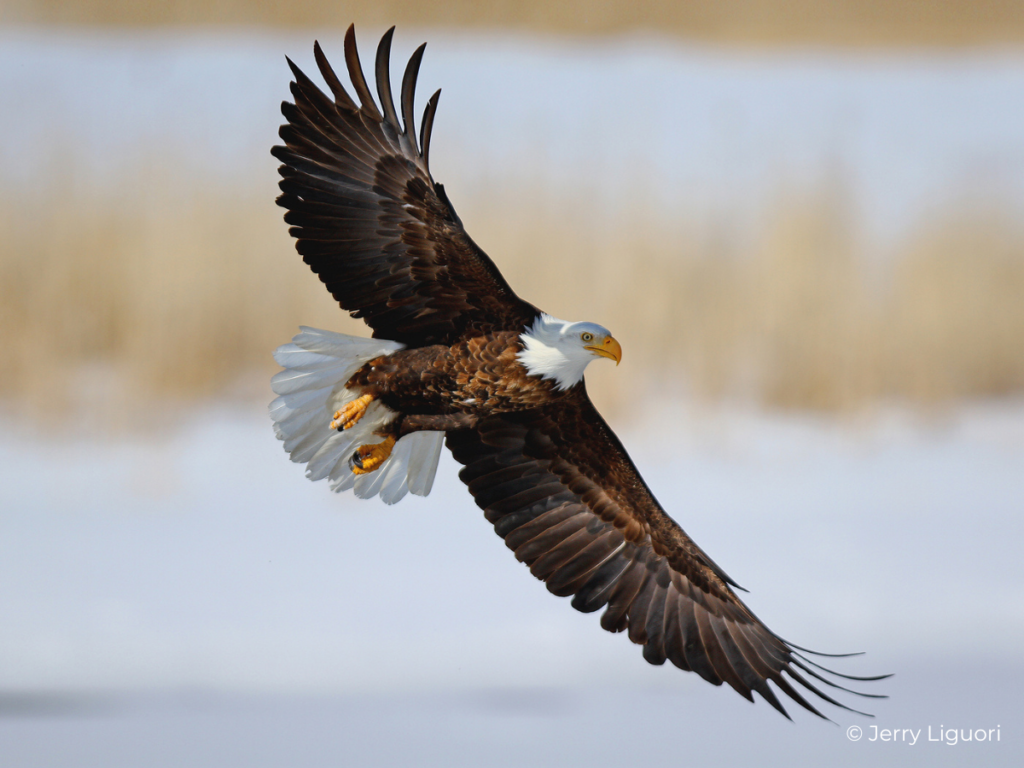Overview
The Bald Eagle is a huge bird, noticeably larger than a vulture and twice the size of a Red-tailed Hawk. Although size is difficult to determine on birds in the field, eagles look large regardless of how far away they are, even birds from the southern population, which are smaller than the birds in the north. Adult Bald Eagles are perhaps the most well-known raptor in the world. Birders and non-birders are familiar with their characteristic white head and tail, especially in the U.S., where it is the nation’s symbol.
Bald Eagles prey mostly on fish and are typically found near water, moving south if their local streams or lakes freeze over. They are extremely efficient at plucking fish from shallow waters in one fell swoop, much like the Osprey. They are also quite agile and capable of capturing ducks and other birds in flight. Despite their reputation as a fierce predator, Bald Eagles often scavenge dead animals or steal prey from other raptors when the opportunity arises. This is frustrating for any Osprey that happens to nest near a Bald Eagle, who will steal fish from the Osprey all summer long.
Bald Eagles build massive stick nests in the tops of large trees, and in some cases on man-made structures and platforms. They add to their nests every year; some older nests reach such a weight that the tree supporting it collapses! Bald Eagles are communal during winter, when hundreds and even thousands may gather at food source and roost together in large snags each night. Females are notably larger than males, and this is most obvious when a pair is side-by-side. Bald Eagles have a relatively weak voice, conveying a series of high-pitched, descending whistles when agitated or courting.




